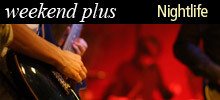Originally published September 13, 2014 at 8:02 PM | Page modified September 16, 2014 at 11:33 AM
Ryanair’s CEO puts on a show in Seattle
Sunday Buzz: Ryanair CEO says the company is expanding and trying for better customer service; Starbucks Seahawks cards are flying off the shelves; Washington Cider Week.
![]()
Though ultralow-cost European airline Ryanair is well known for dismissing passengers who dare complain about its skimpy service, Chief Executive Michael O’Leary a year ago unexpectedly changed course and began a serious campaign to woo business travelers.
“Our reputation is a barrier to bringing new people to fly,” O’Leary said in an interview in Seattle on Tuesday. “We’ve been working very hard for the last 12 months to change some of the policies that used to piss people off.”
It’s part of the bold expansion plan O’Leary outlined this past week: to grow Ryanair’s traffic from 82 million passengers last year to 150 million in 10 years.
What policies were pissing people off?
Prohibiting a second carry-on bag; slapping exorbitant fees on families arriving at the airport with small children or with luggage a half-inch too wide; charging hundreds of dollars to print boarding passes at check-in.
And doing it all with a take-it-or-fly-elsewhere, we-don’t-care attitude.
“In the past, we were very obdurate about some of our policies,” said O’Leary. “We’ve learned to be ... a little more sensitive to our customers.”
Can O’Leary successfully tweak the business model that has made Ryanair the most profitable airline in Europe?
Boeing surely needs the transformation to work. If all goes to plan, Ryanair will take an average of three 737s per month out of the Renton assembly plant for the next 10 years.
Manic energy
In Seattle last week, O’Leary dazzled his audience of Boeing workers with his humor and manic energy.
He dived into the crowd around the airplane at Boeing Field like an out-of-control politician, shaking hands, hugging women, posing for photos and cracking jokes.
He wore a Marshawn Lynch Seattle Seahawks jersey, and on his head a silly plastic tiara appeared to sprout 737 MAX winglets out of his ears.
Given an outsized pair of golden scissors to cut the ribbon at the bottom of the stairs up to the new high-density model jet, he mugged for the photographers by putting the blades to his throat and claiming that this was the way Boeing Commercial Airplanes Chief Ray Conner negotiated pricing with him.
When he stepped up to the microphone to speak, he bounced up and down and starting chanting Beyoncé’s hit “Single Ladies,” earning him the title of the world’s most off-kilter and entertaining airline chief executive.
He’s also known for his profane, witty and biting attacks on politicians and aviation regulators who dare impose new taxes, fees or limits to his airline business.
In America, he tones it down just a bit.
In an interview at Boeing Field, he used the f-word only once, in reference to the failure by the U.S. Department of Transportation — under pressure from unions, U.S. airlines and Congress — to grant a license for trans-Atlantic service to Dublin-based Norwegian Air International.
O’Leary, who said he hopes in a few years to launch his own low-fare trans-Atlantic service, firmly supports the principles of the U.S.-European Open Skies treaty, even though back home Norwegian is his direct competitor.
“Those guys are flying 787s. They are supporting American jobs,” O’Leary said. “It’s a disgrace. Congress should be ashamed of themselves.”
No wider seats
But back to Ryanair. What’s behind this charm offensive?
London-based aviation analyst Chris Tarry said Ryanair, which until now has flown mainly leisure travelers content to land at secondary airports, has saturated that market.
“Its ability to stimulate low-fare growth ... became exhausted,” Tarry said. “The focus had to change. They had to focus on attracting higher-value passengers who travel for business.”
Michael E. Levine, a former airline executive now on the New York University Law School faculty, said Ryanair must constantly convince the financial markets that it is growing.
“O’Leary has a bunch of people in the financial world telling him, ‘Nice what you’ve done. What’s next?’,” Levine said.
“Around the world, fast-growing low-cost airlines are coming up against growth limits,” said Levine. “They are trying to figure out how to diversify and at the same time trying to keep their unit costs down.”
Details of Ryanair’s offering to business travelers show it certainly intends to woo them without sacrificing its low costs.
The plane O’Leary took on Tuesday doesn’t feature any business-class seats.
Business travelers “don’t want a wider seat,” O’Leary said. “They want to show up, get through the airport quickly, get on an on-time flight and get where they want to go.”
With that mindset, Ryanair is offering business people a package that includes a fast-track line through security; seats at the front and back of the plane so they can exit first upon landing; and flexible ticketing so they can change flights without hefty fees.
It’s another twist on the strategy commonly used by airlines to charge for various revenue-enhancing ancillary services such as checked bags.
Airline analyst Levine is dubious that this offering will attract business travelers to switch from more standard airlines, even with the new 737 MAX 200 jets that O’Leary ordered last week.
The MAX will carry 197 passengers and feature a new light-filled interior and a tiny amount of extra legroom earned by removing the galleys fore and aft.
“The likelihood that you can move yourself upscale by putting 200 people on this airplane and saying, look, the decoration is nicer and you have an inch more legroom, that’s insufficient differentiation,” said Levine.
It will also begin to fly into more of the primary airports business travelers want to go to, competing head-to-head against the big European flag carriers.
O’Leary announced the 737 MAX 200 deal in New York last Monday specifically so that he could visit Wall Street to convince them his plan for rapid growth will be successful.
In Seattle a day later, he showed no doubts.
“The 737 MAX 200 is such a game-changing aircraft. We have such a cost advantage already. This gives us more seats,” O’Leary said. “Nothing should stop us from getting to 150 million passengers.”
— Dominic Gates: dgates@seattletimes.com
Starbucks Seahawks cards flying off the shelf
What’s blue and green, has a big No. 12 on it and has begun to resemble a mythical creature, since it is darn near impossible to find?
The Starbucks Seahawks card. They’re flying off the shelves. “They’re very popular. The day we put them out, we’re already sold out,” says a barista at the 15th Avenue East Starbucks on Capitol Hill. A barista at the Terry and Republican Starbucks in South Lake Union advised trying to buy one early on Tuesday, when the next shipment arrives at that store.
The Seattle coffee giant, which launched the stored value cards on Sept. 2, won’t disclose how many it has printed or how many it has sold, nor how many remain to be shipped.
But spokeswoman Erin Shane says that “a majority of the stores in Seattle ran out of the cards by 8 a.m. on the first day.” The company is continuing to replenish inventory.
The card is part of the company’s partnership with A Better Seattle (ASB), a nonprofit effort launched by Seahawks coach PeteCarroll. Until Sept. 21, transactions made with Seahawks Starbucks cards (including last year’s edition) will result in a 25-cent donation to ABS’ efforts to help underprivileged youth.
The Seahawks card is somewhat of a rarity at Starbucks: it’s the only National Football League card the company has. (It has also issued a Sounders soccer card.) Shane also says the card is the favorite of Adam Brotman, the Starbucks executive who heads the company’s technology efforts, which include mobile payments and loyalty cards.
— Ángel González: agonzalez@seattletimes.com
The state of cider making
It’s still Washington Cider Week (yes, inexplicably, a 10-day week from Sept. 4-14). So who are the state’s largest cider makers?
Unfortunately the Washington State Liquor Control Board doesn’t track cideries separately from wineries or breweries.
However, from the Liquor Board list of all licensees, these are the half-dozen largest producers for the last 12 months whose names identify them as primarily cider makers: Seattle Cider, Seattle: 130,026 gallons; Harmony Cider, Tieton: 61,123 gallons; Schilling Cider, Auburn: 53,265 gallons; Finnriver Cidery, Chimacum: 31,113 gallons; Snowdrift Cider, East Wenatchee: 6,339 gallons; Vashon Ciderworks, Vashon Island: 6,302 gallons.
— Rami Grunbaum: rgrunbaum@seattletimes.com
 Four weeks for 99 cents of unlimited digital access to The Seattle Times. Try it now!
Four weeks for 99 cents of unlimited digital access to The Seattle Times. Try it now!

















